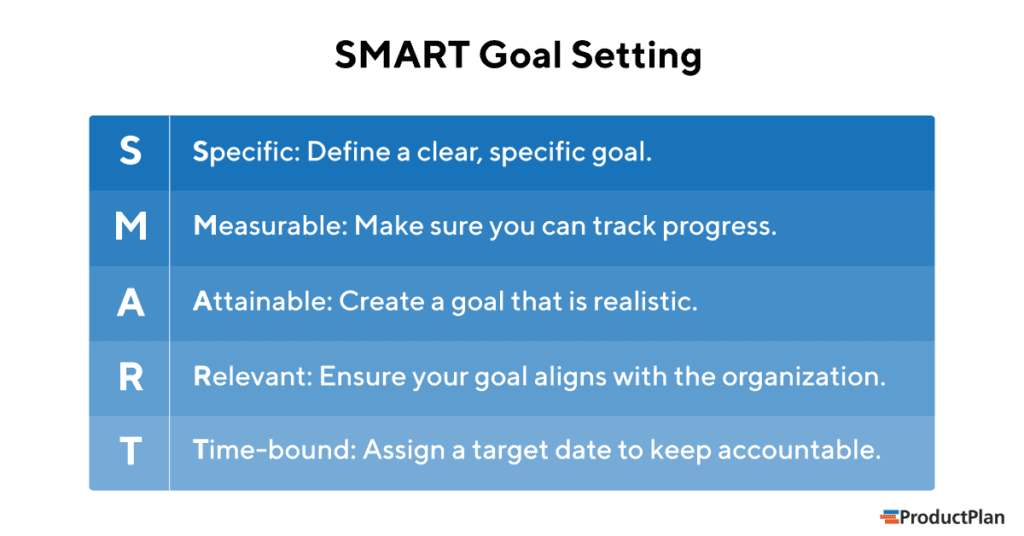What is SMART goal setting?
The SMART framework provides the framework for setting clear, attainable goals in project management. The acronym stands for Specific, Measurable, Attainable, Relevant, and Time-bound.

A SMART goal incorporates all of these elements to bring greater clarity, focus, and motivation, which help increase the odds of successfully achieving the desired results.
What is the History of SMART Goal Setting?
The SMART goal-setting approach, commonly attributed to Peter Drucker, a prolific author, and management consultant whose writing helped shape modern business, first appeared in a November 1981 issue of Management Review. Since then, SMART has evolved to facilitate broader interpretations than the original intent. The acronym has even expanded to SMARTER for some to accommodate two additional criteria: Evaluated and Reviewed.
How is it Useful for Product Management?
Identifying and establishing goals is an ever-present and significant part of a product manager’s existence. SMART goal setting can help PMs and product teams create realistic, attainable goals and stick to a plan.
Cait Porte, the co-founder of Boston Women in Product and force behind Product Manager in Heels, writes:
“For product managers, setting goals for your products and roadmaps on a monthly, quarterly and annual basis will help you with your accomplishments and provide the visibility into your work that senior managers are looking for. …Whatever the goal, make sure that it follows the outline of SMART goals, and I guarantee it will be more achievable than if you hadn’t.”
Once a PM has a roadmap, SMART goals can help bring clarity, focus, and motivation to actionable tasks. By defining objectives and setting deadlines, PMs are more likely to achieve success.
How to Create a SMART Goal
Here are the steps to using this framework to create, develop, and achieve a clear, meaningful goal.
1. Specific: Define a clear, specific goal.
2. Measurable: Make sure your goal is measurable to track progress, which helps you stay focused and meet deadlines.
3. Attainable: Create a realistic goal. It shouldn’t be limiting but should be attainable.
4. Relevant: Ensure your goal matters to you and aligns with your other goals and the needs of the organization.
5. Time-bound: Assign a target date so that your SMART goal doesn’t get lost in day-to-day demands.
Related terms: Roadmap, Product Strategy, Project Roadmap, Design Thinking, Sprint Goal, Product Vision, Backlog.

